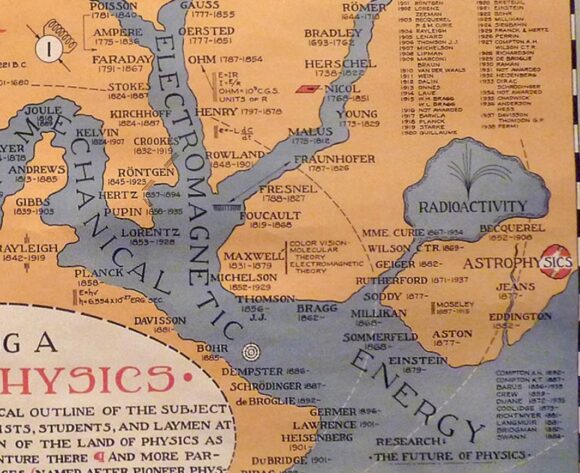On July 21, the day Joe Biden stood down, I bet £50 that Gretchen Whitmer, the governor of Michigan, would end up winning the 2024 US presidential election. My wife remembers Whitmer from their student days, and reckons she’s a star in the making. My £50 would have earned me £2500 had she actually stood for president and won. But history makes fools of us all, and my bet bought me barely a day of that warm, Walter-Mittyish feeling that comes when you stake a claim in other people’s business.
The polls this election cycle indicated a tight race – underestimating Trump’s reach. But cast your mind back to 2016, when the professional pollster Nate Silver said Donald Trump stood a 29 per cent chance of winning the US presidency. The betting market, on the eve of that election, put Trump on an even lower 18 per cent chance. Gamblers eyed up the difference, took a punt, and did very well. And everyone else called Silver an idiot for not spotting Trump’s eventual win.
Their mistake was to think that Silver was a fortune-teller.
Divination is a 6,000-year-old practice that promises to sate our human hunger for certainty. On the other hand, gambling on future events – as the commercial operation we know today – began only a few hundred years ago in the casinos of Italy. Gambling promises nothing, and it only really works if you understand the mathematics.
The assumption that the world is inherently unpredictable – so that every action has an upside and a downside – got its first formal expression in Jacob Bernoulli’s 1713 treatise Ars Conjectandi (“The Art of Conjecturing”), and many of us still can’t wrap our heads around it. We’d sooner embrace certainties, however specious, than take risks, however measurable.
We’re risk-averse by nature, because the answer to the question “Well, what’s the worst that could happen?” has, over the course of evolution, been very bad indeed. You could fall. You could be bitten. You could have your arm ripped off. (Surprise a cat with a cucumber and it’ll jump out of its skin, because it’s still afraid of the snakes that stalked its ancestors.)
Thousands of years ago, you might have thrown dice to see who buys the next round, but you’d head to the Oracle to learn about events that could really change your life. A forthcoming exhibition at the Bodleian Library in Oxford, Oracles, Omens and Answers, takes a historical look at our attempts to divine the future. You might assume those Chinese oracle bones are curios from a distant and more innocent time – except that, turning a corner, you come across a book by Joan Quigley, who was in-house astrologer to US president Ronald Reagan. Our relationship to the future hasn’t changed very much, after all. (Nancy Reagan reached out to Quigley after a would-be assassin’s bullet tore through her husband’s lung. What crutch would I reach for, I wonder, at a moment like that?)
The problem with divination is that it doesn’t work. It’s patently falsifiable. But this wasn’t always the case. In a world radically simpler than our own, there are fewer things that can happen, and more likelihood of one of them happening in accordance with a prediction. This turned omens into powerful political weapons. No wonder, then, that in 11 AD, Augustus banned predictions pertaining to the date of someone’s death, while at the same time the Roman emperor made his own horoscope public. At a stroke, he turned astrology from an existential threat into a branch of his own PR machine.
The Bamoun state of western Cameroon had an even surer method for governing divination – in effect until the early 20th century. If you asked a diviner whether someone important would live or die, and the diviner said they’d live, but actually they died, then they’d put you, rather than the diviner, to death.
It used to be that you could throw a sheep’s shoulder blade on the flames and tell the future from the cracks that the fire made in the bone. Now that life is more complicated, anything but the most complicated forms of divination seems fatuous.
The daddy of them all is astrology: “the ancient world’s most ambitious applied mathematics problem”, according to the science historian Alexander Boxer. There’s a passage in Boxer’s book A Scheme of Heaven describing how a particularly fine observation, made by Hipparchus in 130 BC, depended on his going back over records that must have been many hundreds of years old. Astronomical diaries from the Assyrian library at Nineveh stretch from 652BC to 61BC, making them (as far as we know) the longest continuous research project ever undertaken.
You don’t go to that amount of effort pursuing claims that are clearly false. You do it in pursuit of cosmological regularities that, if you could only isolate them, would bring order and peace to your world. Today’s evangelists for artificial intelligence should take note of Boxer, who writes: “Those of us who are enthusiastic about the promise of numerical data to unlock the secrets of ourselves and our world would do well simply to acknowledge that others have come this way before.”
Astrology has proved adaptable. Classical astrology assumed that we lived in a deterministic world – one in which all events are causally decided by preceding events. You can trace the first cracks in this fixed view of the world all the way back to the medieval Christian church and its pesky insistence on free will (without which one cannot sin).
In spite of powerful Church opposition, astrology clung on in its old form until the Black Death, when its conspicuous failure to predict the death of a third of Europe called time on (nearly) everyone’s credulity. All of a sudden, and with what fleet footwork one can only imagine, horoscopists decided that your fate depended, not just upon your birth date, but also upon when you visited the horoscopist. This muddied the waters wonderfully, and made today’s playful, me-friendly astrologers – particularly popular on TikTok – possible.
***
The problem with trying to relate events to the movement of the planets is not that you won’t find any correlations. The problem is that there are correlations everywhere you look.
And these days, of course, we don’t even have to look: modern machine-learning algorithms are correlation monsters; they can make pretty much any signal correlate with any other. In their recent book AI Snake Oil, computer scientists Arvind Narayanan and Sayash Kapoor spend a good many pages dissecting the promise of predictive artificial intelligence (for instance, statistical software that claims to identify crimes before they have happened). If it fails, it will fail for exactly the same reasons astrology fails – because it’s churning through an ultimately meaningless data set. The authors conclude that immediate dangers from AI “largely stem from… our desperate and untutored keenness for prediction.”
The promise of such mechanical prediction is essentially astrological. We absolutely can use it to predict the future, but only if the world turns out, underneath all that roiling complexity, to be deterministic.
There are some areas in which our predictive powers have improved. The European Centre for Medium-Range Weather Forecasts opened in Reading in 1979. It was able to see three days into the future. Six years later, it could see five days ahead. In 2012 it could see eight days ahead and predicted Hurricane Sandy. By next year it expects to be able to predict high-impact events a fortnight before they happen.
Drunk on achievements in understanding atmospheric physics, some enthusiasts expect to predict human weather using much the same methods. They’re encouraged by numerical analyses that throw up glancing insights into corners of human behaviour. Purchasing trends can predict the ebb and flow of conflict because everyone rushes out to buy supplies in advance of the bombings. Trading algorithms predicted the post-Covid recovery of financial markets weeks before it happened.
Nonetheless, it is a classic error to mistake reality for the analogy you just used to describe it. Political weather is not remotely the same as weather. Still, the dream persists among statistics-savvy self-styled “superforecasters”, who regularly peddle ideas such as “mirror worlds” and “policy flight simulators”, to help us navigate the future of complex economic and social systems.
The danger with such prophecies is not that they are wrong; rather, the danger lies in the power to actually make them come true. Take election polling. Calling the election before it happens heartens leaders, disheartens laggards, and encourages everyone to alter their campaigns to address the anxieties and fears of the moment. Indeed, the easiest, most sure-fire way of predicting the future is to get an iron grip on the present – something the Soviets knew all too well. Then the future becomes, quite literally, what you make it.
There are other dangers, as we increasingly trust predictive technology with our lives. For instance, GPS uses a predictive algorithm in combination with satellite signals to plot our trajectory. And in December last year, a driver followed his satnav through Essex, down a little lane in Great Dunmow called Flitch Way, and straight into the River Chelmer.
We should not assume, just because the oracle is mechanical, that it’s infallible. There’s a story Isaac Asimov wrote in 1955 called Franchise, about a computer that, by chugging through the buzzing confusion of the world, can pinpoint the one individual whose galvanic skin response to random questions reveals which political candidate would be (and therefore is) the winner in any given election.
Because he wants to talk about correlation, computation, and big data, Asimov skates over the obvious point here – that a system like that can never know if it’s broken. And if that’s what certainty looks like, well, I’d sooner gamble.





